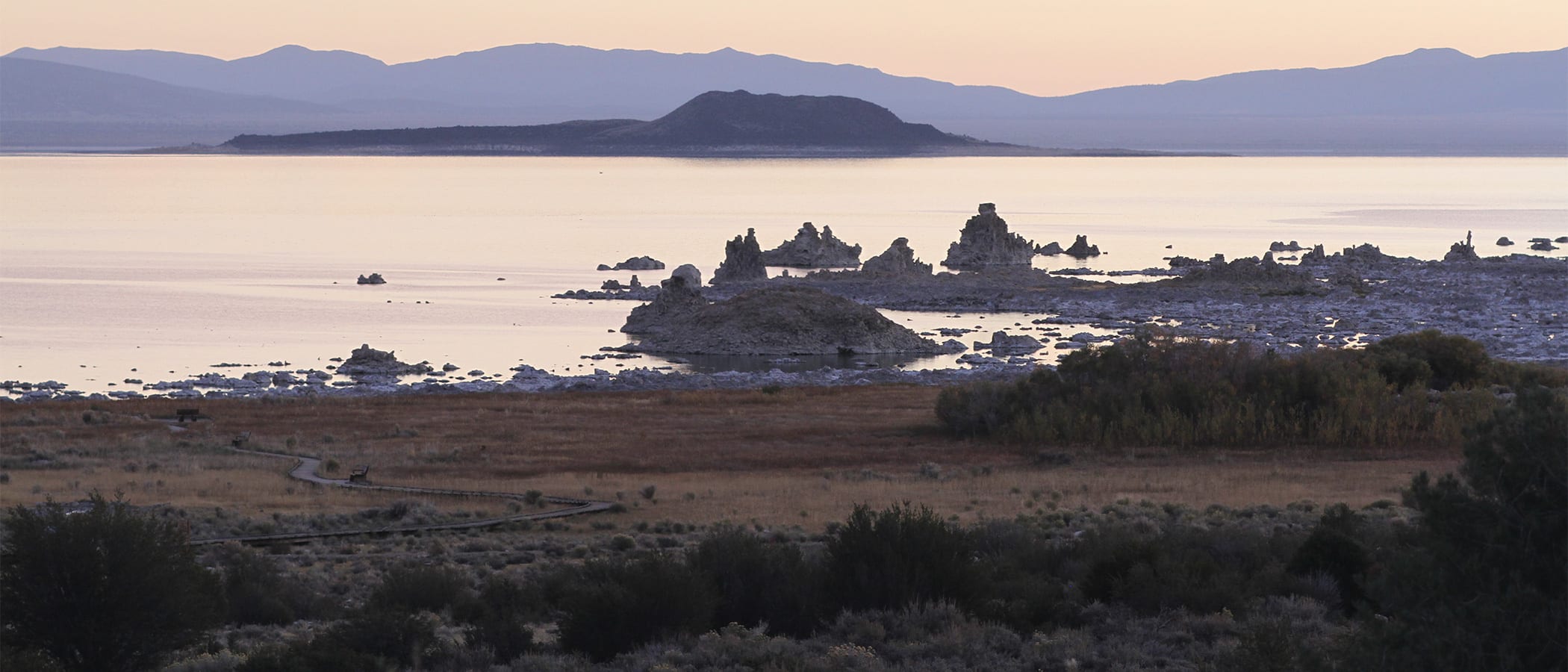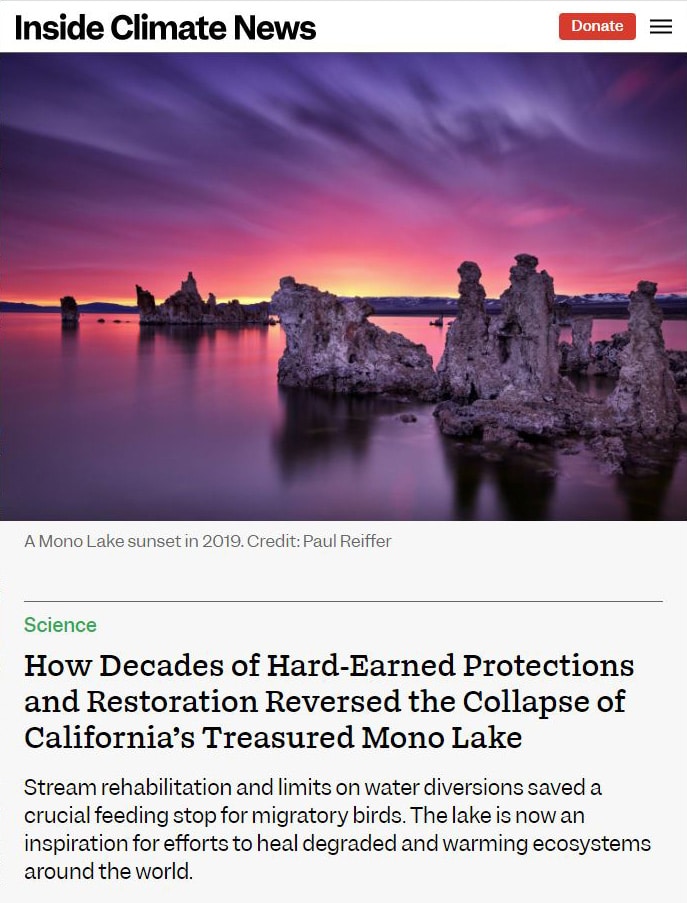

Mono Lake is featured this week at Inside Climate News—reporter Bob Berwyn covers the hard-won limits on Los Angeles’ stream diversions that protect the lake and the persistent work needed to keep restoration work moving forward.
Rather than sweeping policy remedies, quick fixes and one-time pushes for action, Mono Lake’s recovery resulted from decades of sustained efforts, including establishing layers of protection at different levels of government and the ongoing involvement of generations of researchers, activists and lawmakers who have fought to save the Mono Basin and reconnected thousands of stakeholders to an otherworldly environment that is at once easy to neglect and critically important.
While Mono Lake is protected, it has not been able to rise to the healthy management level that was required by the State Water Board in 1994. It’s clear that reaching that level will require changes to LA’s stream diversions so the lake can rise be resilient into the future of a changing climate.
Early modeling projected that, with diversions curtailed, Mono Lake could reach [the restoration target level] as soon as the early 2000s, but it never came close. That’s about the same time the climate started throwing curveballs at us, said Peter Vorster, a hydrologist with The Bay Institute, who has been studying Mono’s stream flows and water levels for more than 40 years.
“The rules that we set aren’t going to get us there,” he said. “The climate has changed such that the lake will not, in the time we’ve set, reach the desired level. We’re going to have to make changes to the rules.”
…the state water board is setting the stage for another full hearing that will reconsider how to ensure restoration in an era of increasing climate extremes, based on the latest science. Several recent studies show that California, and other parts of the West, are probably facing a series of climate whiplashes, especially between extreme drought and deluge, with drivers including atmospheric rivers, and potentially stronger or more erratic El Niño-La Niña climate cycles.
McQuilkin said no date has been set, but that recent models for the Mono Basin suggest that entirely curtailing diversions of streams and groundwater is the best and fastest way to get the lake to a safe level.
Mono Lake Committee members will see some familiar faces in the article, including Committee staff Rose, Geoff, and Robbie. Ryan Carle of Oikonos Ecosystem Knowledge, who conducts phalarope surveys here, discusses the importance of Mono Lake as a stopover for migrating birds. Berwyn also spoke with Mono Lake Kootzaduka’a Tribe elder Dean Tonnena about the Tribe’s goals for restoring Mono Lake and achieving federal recognition.
Inside Climate News is free to read but you may be asked for your email to read the whole article.
Top photo by Robbie Di Paolo: A view of Negit Island and the tufa towers at Old Marina on an early October morning.
